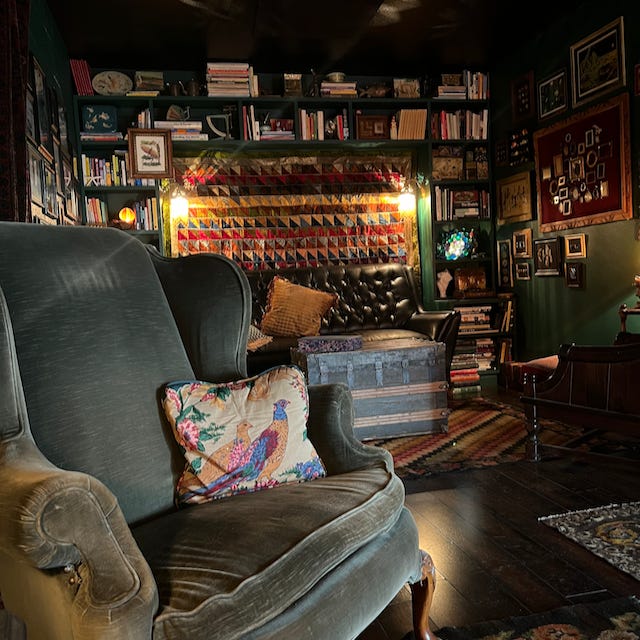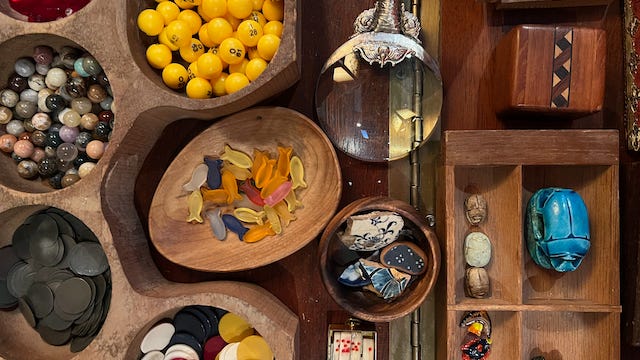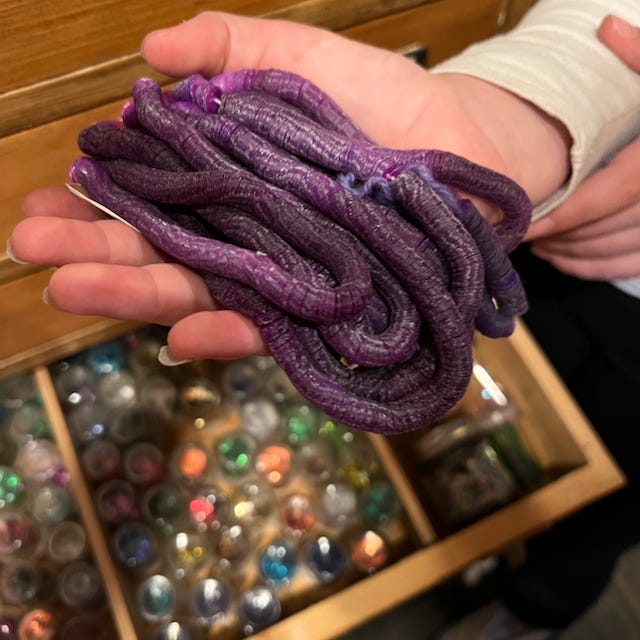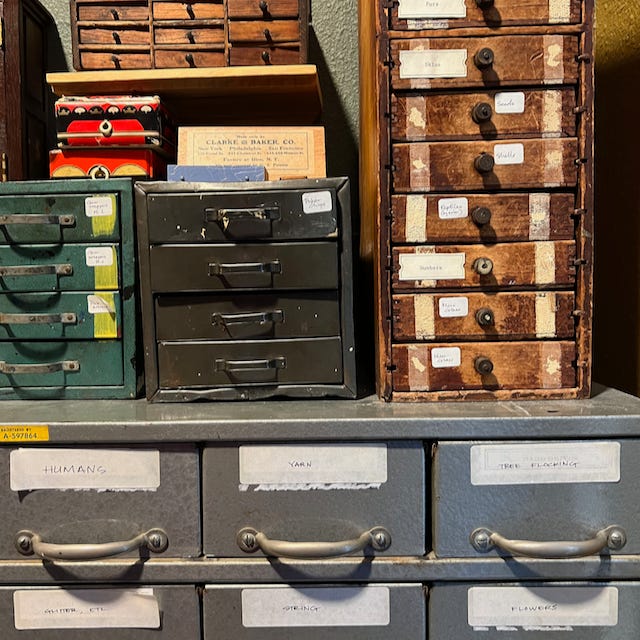The Organizing Edition
On art, collecting, and the magic of overlooked objects.
Stephanie Balzer (SB) is a writer, coach, and founder of Mission. She recently wrote the Art in Vegas, Lip Gloss, and Game Creator editions.
Stephanie here. Just a few miles from the Las Vegas Strip and across the street from the gates of The Las Vegas Country Club, in a 1960s shopping plaza where the Rat Pack used to hang out, and Led Zeppelin played, and Drew Carey performed, you can walk into a particular office and pull out the drawers of small wooden cabinets to gaze at the beauty of useless ceramic capacitors sorted by color, or googly eyes in boxes organized by size, or tiny bottle-brush trees lined up in a row.
Welcome to the Office of Collecting and Design, an archive of curated objects that belong to artist and filmmaker Jessica Oreck.
Oreck has been gathering items since she was a child and opened the office in the Historical Commercial Center District two years ago. Guests are invited to touch, explore and play in the collection, which fits into a few cozy rooms and then is artfully organized on shelves and into cabinets, drawers, jars, trays, and dishes. The office only opens on Wednesdays or by appointment. Photography is welcomed. Tagging on social media, encouraged. Also there’s a small shop if you want to buy a souvenir.
I went to the office last week with friends from Denver. It’s tough to describe the experience in a way that captures its essence, but perhaps it’s a bit like opening someone else’s refrigerator: maybe they have the same stuff you do—there's ketchup, creamer, eggs, and tangerines. Yet the whole feels different, from what it’s like to yank open the door to noticing where everything is kept. And instead of one jar of mustard, there are 27.
Lots of people collect things, but this is a particular kind of archive: vintage, unusual, beautiful, analogue, and overlooked objects. Tiny stuff. Stuff that you might put in a junk drawer and then throw away after the sentimentality fades. A broken doll foot. Shaman stones. A resin toy telephone.
Some of the office’s items are singular, like the camel in a top hat with only half of one leg. Others have accumulated by type or kind, warranting their own drawer, possibly with a label. Bags of powdered flocking for trees live together, for example. So do parts of zippers. So do cows, and string.
We are experimenting with running some weekly classifieds in WITI. If you’re interested in running an ad, you can purchase one through this form. If you buy this week, we’ll throw an extra week in for free on any ad. If you have any questions, don’t hesitate to drop a line.
There are less than 10 tickets left for the BrXnd Marketing X AI Conference. If you haven’t got one yet, get yours today.
Other objects are collected because they are miniature, like vintage plastic doll-sized television sets or pencil stubs. Still others are included for their vibrant color and beauty, like jars of Japanese pigments or old sequins.
Collecting is an exercise in creating a framework, the logic of what is in or out. But then there are decisions that seem associative or intuitive. For instance, the office has a shrine of objects that have been donated, which reside together as their own category until more permanent homes are found. It’s like how we introduce animals to each other in new environments: slowly, and with measure.
Why is this interesting?
That this office exists, and in Las Vegas, is interesting in itself. But even more curious is the way it serves as an homage to the act of organizing—the deep satisfaction we take from putting things in place.
Humans seemingly organize everything, from people to data to land. We can’t help it. We admire organization. We stress about it. We pathologize those who cannot do it. We make reality television about it.
Here’s a partial list of what people I know collect, then organize, and sometimes display: Unique purses, jazz records, old electronics, baskets, cameras, comic books, stickers, skateboards, surfboards, Care Bears, hotel keys, depression-era glass candlestick holders but only in green, and books. Many, many books.
So in contrast to organizing personal collections such as those, what’s unique about the office is that guests get the opportunity to organize like artists. The objects are the paint. For a small fee, you can create a visual arrangement—your own subset category of anything from the archive—as a “flatlay” design. The museum’s back corner and Instagram are galleries of polaroid images of flatlays created by others.
If you choose to make a flatlay yourself, make sure you book a reservation in advance. They say it takes two hours, but it seems to me it would take a lifetime. Then, you can organize according to whatever categorizing principles you choose. It could be anything—relational, historical, philosophical, nostalgic, whimsical. Anything at all. (SB)
—
Thanks for reading,
Noah (NRB) & Colin (CJN) & Stephanie (SB)
—
Why is this interesting? is a daily email from Noah Brier & Colin Nagy (and friends!) about interesting things. If you’ve enjoyed this edition, please consider forwarding it to a friend. If you’re reading it for the first time, consider subscribing.






I think the work of Mark Dion is very similar :)